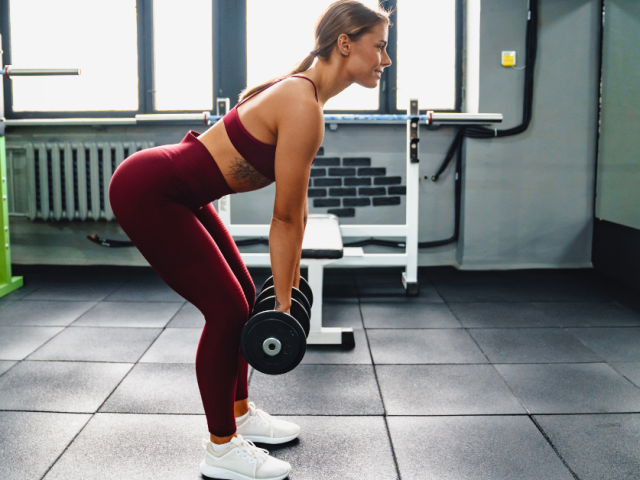We all know that exercise is good for you, but there are so many reasons why strength training is awesome for us over 40s!
Strength training is one of the best defences against the effects of aging, as it offsets the muscle mass we lose as we get older. Strength training also improves bone density, can improve brain health and mood, and reduces the chance of injuries. It’s also worth noting that strength training makes you feel empowered, in control, and look good naked! What more could you want?
The good news is that you don’t have to run a marathon to reap the anti-aging benefits of exercise. A few days of strength training each week will make a huge difference in how you look and feel.
My tips for strength training in your 40s:
1. Warm up for longer
When we’re in our 20s many of us can handle shorter warm-ups, even though it’s still not ideal. As we get older, it becomes more important to warm our bodies up for strength training to reduce the chance of injury. Increase your general warm up time and make sure you’re warming up the muscles you’ll be using – for example, if you’re doing an arm workout, the ideal warm-up isn’t jogging on the spot. It’s really beneficial to work up to your heaviest weight with some lighter warm-up sets first.
2. Use the right training split
It’s important to choose the training split that best suits your lifestyle and preferences. While one person might feel awesome and recover with ease following three full-body workouts a week, another person might find splitting up each muscle group – for example working legs one day, arms another day – works best for them. Mix it up and pay attention to how you feel, as well as your recovery.
3. Don’t focus on what you can’t do, focus on what you can
Old Injuries and little niggles can be a real drag, but don’t let them stop you from training altogether. An old knee injury might not allow you to do lunges anymore, but you can still get the most out of your leg day workout with moves like step ups and single leg press. Likewise, pressing overhead might really flare up a shoulder issue, but you can still work your shoulders with lateral and front raises without having to go overhead at all. Maybe you used to be an amazing crossfit athlete and now the thought of picking up a barbell flares up your back? Workouts can always be modified: forget about what you use to be good at or enjoy, and listen to your body instead.
4. Quality over Quantity
This is true for everyone, but even more so as we get older! Always focus on good form rather than lifting heavier weights or doing more reps. Don’t ever compromise your form so that you can lift heavier or workout for longer; it’s the quickest way to get an injury.
5. Mix it up
There are so many tools you can use to not only add variety to your strength training, but that will also help prevent any overuse injuries. Use bands for your pressing movements, swap your barbell deadlifts for kettlebell deadlifts, trade your leg press for a swiss ball wall squat. Keep mixing it up, pay attention to your form, and reap the results!
Want to work out with me? Check out my latest full-body strength workout below! Just grab your dumbbells and follow along to complete this full body strength workout at home. You can also sign up to my YouTube channel where I share new workouts every week! Make sure you tick the notification bell, so you never miss a new workout.
Enjoy your strength training, guys! Feel free to connect with me on Instagram and Facebook.




